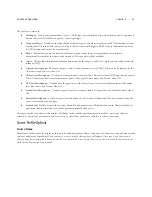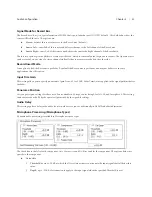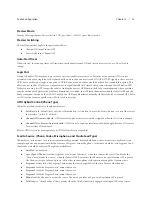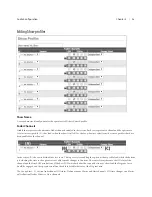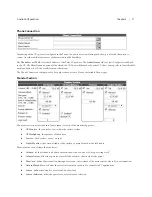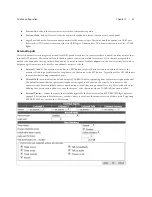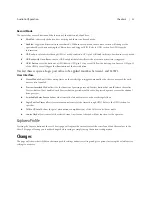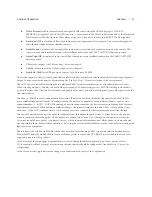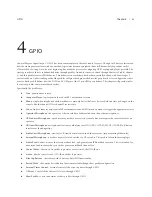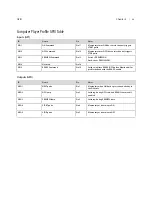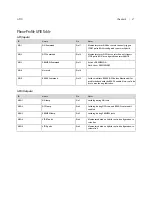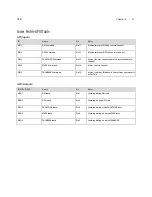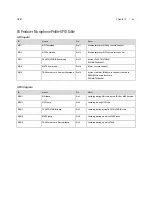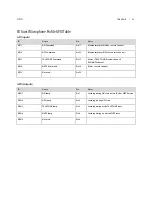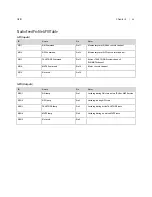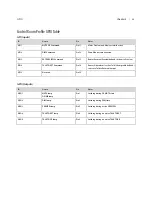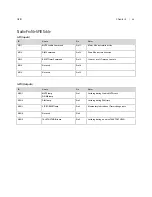
Chapter 3 |
31
Audio Configuration
♦
Talk to External
is audio content from the designated Talk source when the CR Monitor logic of TALK TO
EXTERNAL is triggered (refer to the GPIO section). As mentioned in the Show Profile section above, the designated
TALK source is either the Operator Microphone assigned to a channel or the show profile EXT TALK designation.
♦
Studio Guest HP
is a feed that follows the Studio monitor assignment and is not muted. This source is designed for
use with the headphones other than the operator.
♦
Studio Monitor
is the feed also driven by the Studio monitor selection of the monitor section on the console. This
source is muted due to mute states and receives talkback audio when the TALK TO STUDIO button is pressed.
♦
Studio Talent HP
is similar to Studio Guest HP but the source receives talkback audio when the TALK TO STUDIO
button is pressed.
♦
V-Mix
is the output of the V-Mixer stage (refer to chapter 5)
♦
V-Mode
is the output of the V-Mode stage (refer to chapter 5)
♦
Sine 1kHz - 20dBfs
is a DSP-generated source of a 1kHz tone at -20dBFS.
Next to the output is a Name Override option that is useful if you have multiple consoles in the facility all reporting a Program 1
output. You can override the name to be something like “Studio A Prog1” for easier selection of the correct source.
The AoIP Type is the switch for selecting the two different AES67 forms for transmission—specifically multicast or unicast.
When selecting multicast (default), the next field is also required. When selecting unicast, a SIP URI will be provided that is
given to the other end of the link. The intended configuration for unicast is that the receiving end issues a SIP request from the
transmitter device.
The Channel / IP field is used to define the multicast value. If unicast is declared, this field will populate with a SIP URI for
use in establishing a unicast transfer. In multicast mode, the field can be populated with a multicast address or a Livewire
channel number (1 - 32767). NOTE: When using a Livewire channel number, the device is advertised through the Livewire
advertisement protocol. When defining a multicast address, the system determines this is an AES67 source and thus is not
advertised. As the AoIP standards mature, we should expect to see a standard for these streams to be advertised through.
The Payload Type defines the type of packet. In technical terms, this defines the packet time, or ptime. Ptime is the amount
of audio contained within the packet. AES67 packets are defined to be 1 msec. The other option that can be selected is the
Livewire Standard Stereo packet (or ptime of 5 msec), which is a high-efficiency amount (fill the packet to its max allowed
size and result in lower bandwidth consumption). Selecting the Livewire Standard Stereo may be required for interfacing with
legacy Livewire equipment.
The last item is the SDP file. An SDP file is defined as a method for exchanging AES67 stream information between devices.
Select the SDP link to download the file for use with other products or press the UP ARROW to view the file in a text box for
copy-and-paste into other products.
At the bottom of the output page is a global drop-down for defining the backfeed payload type. Some versions of Telos
VX, for example, will not accept a 1 msec ptime packet and thus this should be configured to Standard Stereo (5 msec) for
compatibility.
At the very end is the Apply button; any changes you make require the press of the Apply button.




